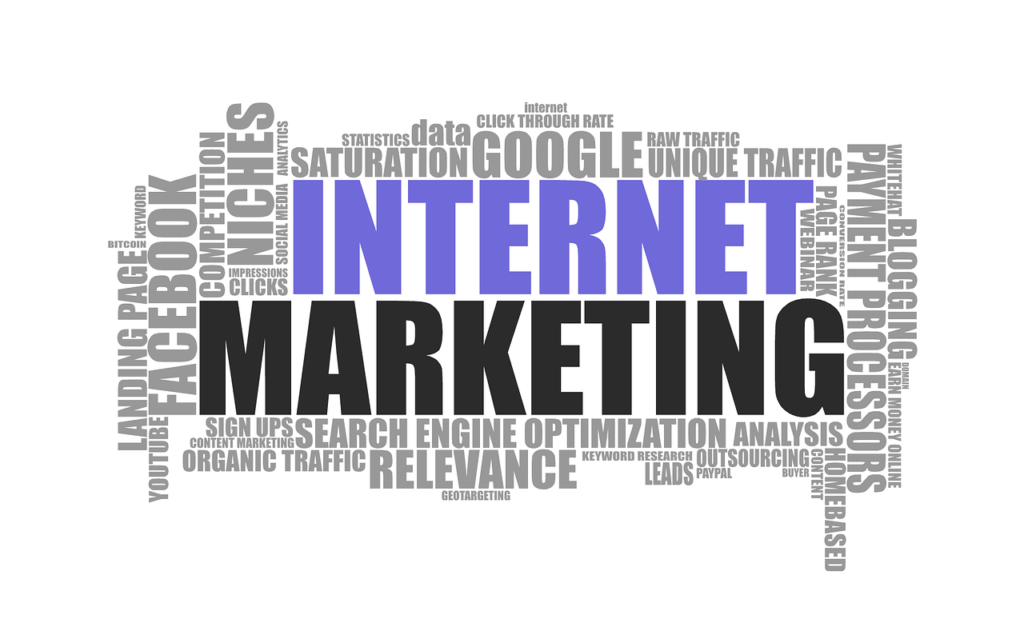Growth marketing incorporates A/B testing, value-added blog articles, data-driven email marketing campaigns, SEO optimization, innovative ad content, and technical analysis of every element of a user’s experience in the conventional marketing strategy. In order to generate robust and sustained growth, the insights acquired from these tactics are swiftly applied.
Traditional marketing techniques rely on “set it and forget it” tactics that burn up a budget and hope for the best. Consider Google Adwords and basic ad copy for display ads. These methods can help enhance a company’s exposure and user acquisition by driving visitors to the top of the sales funnel, but their usefulness diminishes beyond that.
Growth marketing isn’t just for the top of the funnel anymore. When done correctly, it offers value throughout the marketing funnel by attracting people, engaging them, keeping them, and eventually converting them into brand advocates.
These data-driven marketers are heavily involved in formulating a strategy, testing new ideas, and failing swiftly to find out what works.
Growth marketing, like biological evolution, is a stochastic process. This implies that the techniques that could succeed are rather unpredictable. The only way to know for sure what path to take is to start tossing stuff at the wall and seeing what sticks.
Do Companies Need Growth Marketers?
Building growth marketing teams is an industry in that many different sorts of firms are in, but the majority of the changes will be found at either existing technology companies or developing technology startups.
The most effective growth marketers are:
1. Data-Based
The days of making judgments based only on intuition are long gone. The same may be said about making decisions exclusively based on the HiPPO strategy (highest paid person’s opinion). The contemporary growth marketer delves deep into the data to determine which techniques are effective and is adept at using all of the tools available to do so.
2. Creative
The most successful growth marketers are ready to think outside the box. “It’s never been done before, so why to try?” they never say.
If that had been Airbnb’s approach while they were attempting to develop, they would never have thought of offering free professional photos to anyone listed on their platform. What some people believed was insane or superfluous turned out to be a terrific growth engine.
3. Product-Oriented
You can’t sell a product you don’t understand, according to a sales adage. The same logic applies to growth marketers who are in the business of selling and evangelizing. Your objective isn’t to persuade people to buy something they don’t desire, but to explain the numerous advantages of a good product that you honestly feel will benefit them.
4. Have the Mindset of a Hacker
A growth marketer must be a master of several skills. You may be making a video, improving ad content, executing a new A/B test, or even coding on any given day. The more diverse and extensive your skillset, the more value you may provide to a company (especially at an early stage).
5. Fearless in the Face of Failure
A failed experiment, according to successful growth marketers, is not a terrible thing. In reality, failure is the quickest method to learn anything new.
No growth marketer can predict the future. You must be willing to try anything in order to see what works. You’ll ultimately hit on something that works, which you can then refine and repeat.
6. Has a Knack for Telling Stories
All the data in the world won’t help you figure out how to engage with your users in a meaningful way. You must be able to use quantitative and qualitative data to create a compelling tale that connects with your target audience.
7. Capable of Juggling Multiple Tasks
A successful growth marketer must be a contradiction in terms.
Details-obsessed, yet never loses sight of the overall picture. Results-oriented, yet not afraid of ambiguity. Everything is measured and data is trusted, but human intuition is also valued.
Important Growth Marketer Objectives and Metrics
What are the fundamentals of growth marketing?
1. Increase Traffic to Your Website
Any growth marketing manager’s primary aim will be to increase traffic. This may be accomplished in a number of ways.
Natural Traffic
These are visitors that have arrived at your site after using a major search engine. You want to do everything you can to rank towards the top of the search results in order to optimize organic traffic. This involves sharing your high-quality material with other websites to develop inbound connections and creating content that is well-optimized for search engines.
Nerdwallet conducted a poll on emotional overspending to increase organic traffic to their site and persuade other sites to add backlinks to the piece as an example of an organic growth hack. They were able to get links from The Simple Dollar, QuickenLoans, Yahoo, and Fidelity, among others.
Paid Visitors
These are visitors that find their way to your website through your advertising methods. You should keep track of your expenditure, the number of impressions your ads generate, and your CPA (cost per acquisition).
Native advertising, which incorporates non-traditional ad placements that are meant to appear like they are more content-centered, is becoming increasingly popular. Dollar Shave Club is the model to follow when doing experiments in the native sector since they have had significant success with it.
Traffic from Referrals
Any traffic that does not originate from a major search engine falls into this category. As a result, social media traffic and all other sites connecting to your material are important.
People will begin sharing and talking about your material if you are doing things correctly since it is in their nature to do so. This is how viral material is defined. You may optimize in this area by tracking the amount and source of all referral traffic.
Competitive analysis may be used to acquire an advantage, such as tracking your rivals’ social media engagement surges and then attempting to reverse engineer their success.
Publishing guest blog posts is another effective approach to increase referral traffic.
Metrics Collected On-site
It’s crucial to always be aware of what’s going on with your website. You want to know where your visitors come from, what activities they take, and how much time they spend on your site. Another figure to keep an eye on is your bounce rate, which is a good measure of how relevant your content or landing page is.
2. Increase Leads and Conversion Rate
All of the visits in the world are meaningless unless they are turned into new users. Here are the main areas to improve.
What is your total conversion rate for users that come to your site from any source? Any pages with large drop-offs relative to other areas of the site should be scrutinized more closely.
Hubspot tested many website designs and discovered one that more than quadrupled their total conversion rates.
Conversion Rates on Landing Pages
What percentage of visitors to your primary landing page convert? There are several methods to improve this, including experimenting with copy, design, and layout.
The length of the title for material displayed on a landing page is an intriguing area to experiment with. Shorter, punchier headlines, for example, have been demonstrated to perform better.
Email/Blog Subscribers
Is your material engaging enough for people to want to read it? That should be your top focus. Explore the blog of SEO firm Moz for an example of a corporate blog that people actually like and find valuable. Many people would pay for their long-form writing, yet Moz gives it up for free.
Whether you’re already providing good content, how do you know if it’s delivering the desired results? This may be determined by looking at metrics like click-through rate, subscription growth, and shares.
Increase the Number of Free Trials for Premium Subscriptions
If you have a freemium product, you want to convert free trial consumers into paying customers in the end.
DocuSign’s growth marketers used monitoring technology to disclose some premium services to just a certain subset of customers, which is a terrific example. Their testing revealed exactly which features to display, and the trial resulted in a 5% increase in upgrade conversions.
Churn Reduction
The percentage of people that sign up for your service but never use it is known as churn. Since churn is the archenemy of exponential growth, this is a very important measure for SaaS organizations in growth mode. You won’t be able to reach the critical mass of people you need to start producing real income if you’re losing a big part of your clients.
Analyze every reason why people stop using the service and iterate quickly to close the gaps. Is there anything that’s tripping you up? User-interface design People will leave if it isn’t smooth and flawless.
Boost the Average Order Value
You may begin to target users in ways that will raise the average order value by recording and analyzing their activity. Bundling, targeting clients based on prior behavior, and upselling are all things to consider.
Boost Lifetime Value
How can you optimize the value you get from a client after you have them onboard? Conducting user surveys to discover new features that consumers want, pushing clients to move to an annual paying cycle, or delivering focused, premium customer support are all possible strategies.
3. Create a Brand
You can use a firm that is trustworthy, reliable and gives a fantastic user experience into becoming a real brand. Meaning, that in that business, your name may become synonymous with quality.
It all starts with establishing a positive corporate culture. Then, with a savvy PR effort, influencer marketing, good word of mouth, and referral programs, the process of brand growth may be aided.
Difference Between Growth Marketing and Growth Hacking
While the phrases “growth marketing” and “growth hacking” are frequently interadvanced, many firms have minor differences between these jobs.
Growth hackers are more akin to professional consultants hired to fix a specific problem quickly. They are challenged with finding innovative solutions to difficult challenges on a limited budget. Speed is vital to a growth hacker, and problems must be fixed yesterday.
Growth marketers prefer to think in terms of the long term. They must plan how to expand a variety of SaaS growth KPIs across many different dimensions in a sustainable manner.
Growth hacking is comparable to day trading on the stock market. Sure, you can make money that way, but it’s not going to be a reliable source of revenue in the long run.
The best characteristics of growth hacking (specifically, the willingness to go outside the box to acquire traction) are distilled down into a sustainable approach built on rock solid principles in a successful growth marketing strategy. Growth marketing is the polar opposite of day trading in that it is long-term investing based on data-driven criteria that are constantly optimized.



